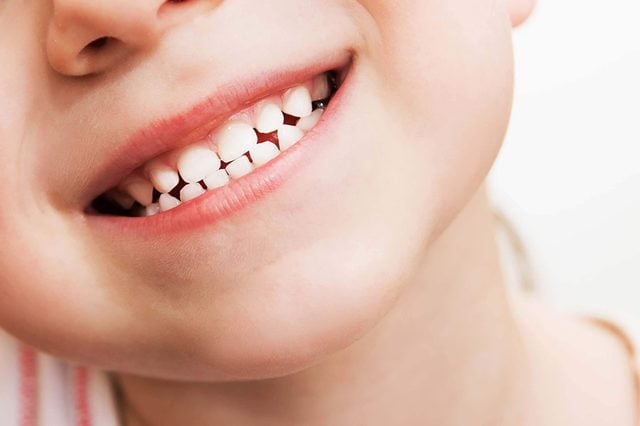The Life-Saving Reason You Should Save Your Child’s Baby Teeth
Updated: Mar. 30, 2022
There's a good reason you may want to hold off on handing over anything to the Tooth Fairy.
 When it comes to baby teeth, parents are often keen on just letting the “tooth fairy” take care of things, but one study may cause you to think twice before tossing away loose teeth. Parents were previously warned to keep an eye on their child’s teeth for possible indication of autism, but this study finds there’s even more researchers and parents can learn by looking at teeth.
When it comes to baby teeth, parents are often keen on just letting the “tooth fairy” take care of things, but one study may cause you to think twice before tossing away loose teeth. Parents were previously warned to keep an eye on their child’s teeth for possible indication of autism, but this study finds there’s even more researchers and parents can learn by looking at teeth.
The study, published online in the Proceedings of the National Academy of Science and reported on by the National Institute of Dental and Craniofacial Research, notes that by the age of six, parents can begin expecting their children to lose baby teeth. These temporary teeth may seem inconsequential, preparing a child’s mouth for adult teeth, but researchers are saying that the teeth hold a rich supply of stem cells that could potentially be used for important research.
After a child loses their tooth, the stem cells inside remain alive for a short time. These stem cells are “unique” compared to ones from adult teeth, and can live longer, grow quicker in culture, and potentially form “specialized dentin, bone, and neuronal cells” with laboratory prompting. Researchers believe that further studies can examine whether the teeth hold a source of stem cells that could be manipulated to repair damaged teeth, induce the regeneration of bone, and treat neural injury or disease, the report notes. (These are the 7 signs of disease your teeth can reveal.)
“Doctors have successfully harvested stem cells from umbilical cord blood for years,” Songtao Shi, MD, a scientist at NIH’s National Institute of Dental and Craniofacial Research (NIDCR) and one of the study’s senior authors said. “Our finding is similar in some ways, in that the stem cells in the tooth are likely latent remnants of an early developmental process.”
The study was a result of Dr. Shi’s personal experience. After his six-year-old daughter lost her tooth, Dr. Shi examined it and found there was still red-colored tissue inside. After taking the tooth to his laboratory he was able to examine it and find that the tooth contained leftover pulp tissue. After his daughter lost another teeth, Shi placed the tooth in a “liquid medium” and extracted the pulp in his laboratory. Following the extraction he discovered that he could isolate living stem cells from the pulp.
Researchers decided to study the findings further in a larger group of children. They were able to find 12 to 20 stem cells from each tooth that could be used in colonization and culture growth. The researchers note that more study is needed based on the findings, but their initial evidence is promising for the potential of baby teeth usage.
“These data are just the start,” said Shi. “We’re trying to characterize more fully which cell types can be generated from these stem cells. Can they be switched into nerve cells only? We need to find this out. We’re also interested in determining the difference between adult dental pulp stem cells and those in deciduous teeth.”
